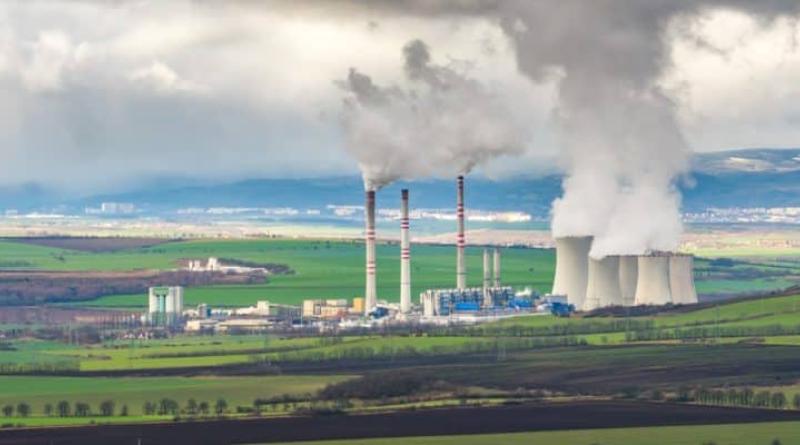Climate: the long race towards the decarbonization of industries in Africa

Climate change, which is accelerating throughout the world, requires the reduction of greenhouse gas (GHG) emissions responsible for global warming. Globally, industry occupies third place among the sectors that emit the most carbon dioxide (CO2). On the occasion of African Climate Week (ACW) which opens on September 4, 2023, Afrik 21 looks back at the challenges and efforts in favor of the decarbonization of industries in Africa.
Africa contributes only 4% of global greenhouse gas (GHG) emissions. However, it is the continent most affected by climate change, which threatens livelihoods and hinders the development of its economy. This situation should not, however, obscure the need for the continent to move towards sustainable economic growth. And this involves several key sectors, notably industry.
Globally, this sector contributes 21% of GHG emissions, according to the Intergovernmental Panel on Climate Change (IPCC). Even though Africa's share of global manufacturing is only 1.9%, Africa's industrialization is accelerating. In recent years, the contribution of the industrial sector to the gross domestic product (GDP) of the entire African continent has jumped by 130%, according to the African Development Bank (AfDB).
Decarbonization of extractive industries
This trend is expected to continue over the coming years, with the decision of several countries and large sub-regional groups to transform their natural resources locally. This is particularly the case of the Central African Economic and Monetary Community (Cemac) which finally reversed course after the decision of its member states to ban the export of logs. A policy that should encourage local wood processing. Gabon has already started processing wood with the installation of a factory in the special economic zone (SEZ) of Nkok, 27 km from Libreville.
In West Africa, Guinea also wants to transform its bauxite on site, whose reserves are estimated at 40 billion tonnes. It is a heavy industry which will require a significant amount of energy. Rich in natural resources and rare earths, the Democratic Republic of Congo (DRC) also wants to transform its resources locally, in order to benefit from the electric car market which is expected to further develop over the coming years. It is also in the extractive industry that a certain dynamism can be observed in the energy transition. In several countries on the continent, operators are equipping their mines and mineral processing plants with renewable energy plants.
The energy transition at full speed in South Africa
It is true that certain energy sources, notably solar, allow above all the reduction of electricity bills. But this approach also makes it possible to reduce GHG emissions linked to mining activities. It is with this in mind that Tharisa signed an agreement a few months ago with the French company Total Eren and the British company Chariot to equip its Karo platinum mine in Zimbabwe with a 30 MWp photovoltaic solar power plant.
Like her, several mining companies have launched into solar energy in recent years. This is the case for the Canadian Robex Resources and Syrah Resources in Mali and Mozambique, the Anglo-Australian Rio Tinto in Madagascar, and the British Anglo American in South Africa. In this southern African country, and also the first most industrialized country on the continent, companies are forced to accelerate their ecological transition because of power cuts linked in part to the obsolescence of coal-fired power stations. In order to support the empowerment of companies vis-à-vis the public company Eskom's network, the South African government now authorizes companies to produce up to 100 MW of clean energy without prior approval from the Regulator. National Energy Agency of South Africa (Nersa).
Green hydrogen or the hope of decarbonization
In South Africa, some companies are exploring green hydrogen. This is the case of the chemical giant Sasol which wants to develop the South African green hydrogen market alongside the Industrial Development Corporation of South Africa (IDC). According to some experts, in the industrial sector, green hydrogen could replace gas and other fossil fuels in heavy industries.
“The African continent, like Latin America, has extremely significant potential in terms of hydrogen production. It has renewable resources including wind, solar, biomass and hydro. These resources far exceed its needs. Obviously, this production of electricity and hydrogen will be used first to satisfy the internal needs of these countries which need to develop ,” explains Paul Lucchese, deputy director of Capentreprises. For this expert, this energy will be a strong ally for the decarbonization of the very energy-intensive metallurgical industry.
South Africa's first hydrogen-powered mining truck
But we will have to be a little patient because, “it will probably be hydrogen the day after tomorrow, that is to say between 2030 and 2040. In fact, hydrogen is a Swiss army knife. So, we need to study all the new technologies and it’s an exciting and hopeful project,” explains Marc Guillaume, professor at École Polytechnique and Paris-Dauphine University. However, the first applications of hydrogen are already visible in the mining industry in Africa.
This is the first mining truck powered by hydrogen. It is a hybrid vehicle equipped with a 1.2 MWh battery bank, as well as fuel cells that provide up to 800 kW of power, combining to provide a total of 2 MW of power. This model is the culmination of the nuGen ™ project developed by the mining company Anglo American to establish a fully integrated green hydrogen system, composed of production, refueling and transport equipment. The truck is operational at the Mogalakwena mine in the Limpopo province of South Africa. Enough to raise hope in a sector dominated by diesel.





